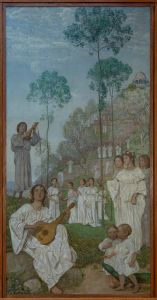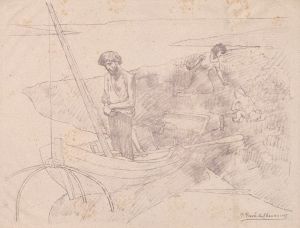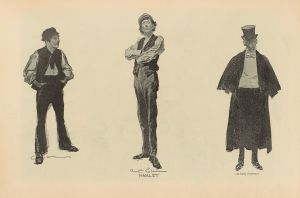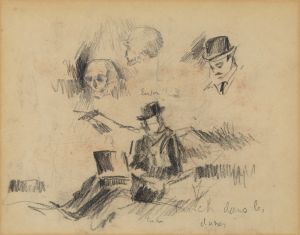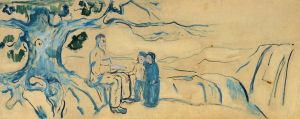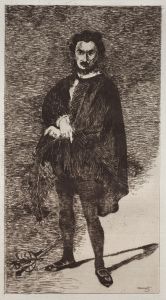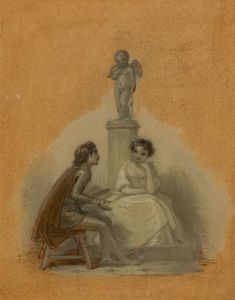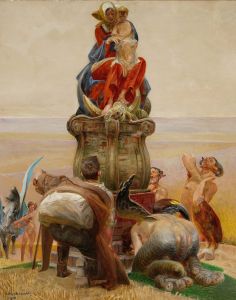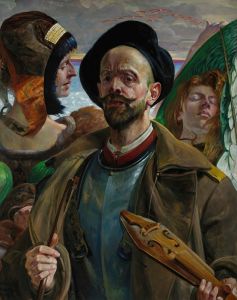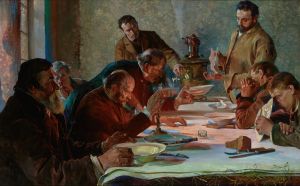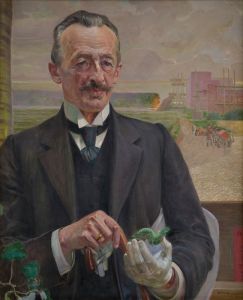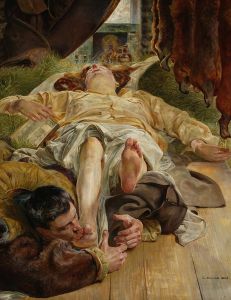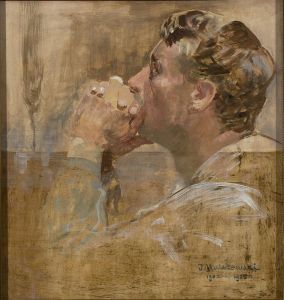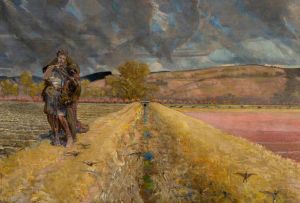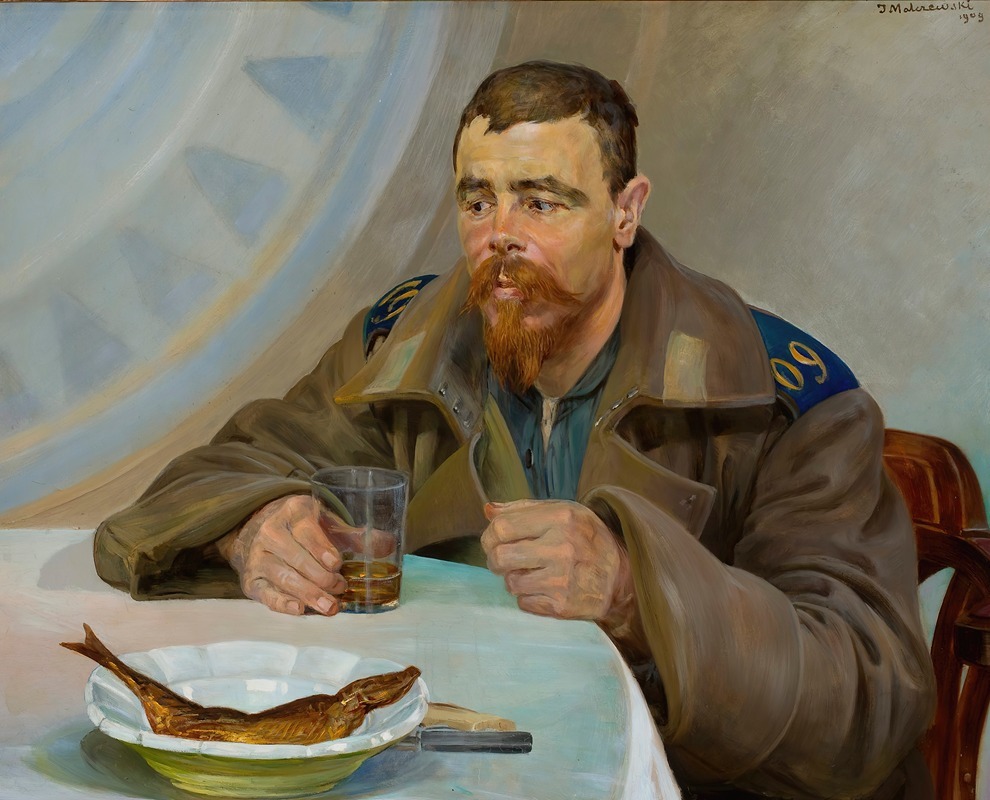
Exile – right section of the triptych
A hand-painted replica of Jacek Malczewski’s masterpiece Exile – right section of the triptych, meticulously crafted by professional artists to capture the true essence of the original. Each piece is created with museum-quality canvas and rare mineral pigments, carefully painted by experienced artists with delicate brushstrokes and rich, layered colors to perfectly recreate the texture of the original artwork. Unlike machine-printed reproductions, this hand-painted version brings the painting to life, infused with the artist’s emotions and skill in every stroke. Whether for personal collection or home decoration, it instantly elevates the artistic atmosphere of any space.
Jacek Malczewski (1854–1929) was a prominent Polish Symbolist painter, known for his deeply allegorical and often patriotic works that reflected the struggles and aspirations of the Polish people during a time when Poland was partitioned and lacked independence. One of his notable works is the triptych titled Exile, which includes the right section often referred to as Exile – right section of the triptych.
The triptych Exile is a profound exploration of themes related to displacement, national identity, and the suffering of the Polish people under foreign rule. Malczewski created this work during a period when Poland was divided among the Russian Empire, the German Empire, and Austria-Hungary, and its citizens faced political oppression and forced deportations. The triptych as a whole reflects the experience of exile, a recurring theme in Malczewski's oeuvre, symbolizing both physical displacement and spiritual alienation.
The right section of the triptych depicts a group of figures in a barren, desolate landscape, emphasizing the harsh conditions and emotional toll of exile. The figures are often interpreted as representing Polish exiles who were sent to Siberia or other remote regions as punishment for their participation in uprisings or resistance against the occupying powers. The composition and use of color in this section evoke a sense of despair and isolation, while also hinting at resilience and hope, which are central to Malczewski's symbolic language.
Malczewski's work is characterized by its rich symbolism, and the Exile triptych is no exception. The figures, their gestures, and the surrounding environment are imbued with layers of meaning, inviting viewers to reflect on the historical and emotional dimensions of exile. The painting also draws on Polish Romanticism, a movement that heavily influenced Malczewski and emphasized themes of national struggle and the quest for freedom.
The Exile triptych, including its right section, is considered one of Malczewski's significant contributions to Polish art and cultural heritage. It serves as a poignant reminder of the resilience of the human spirit and the enduring hope for freedom and self-determination. Today, Malczewski's works, including Exile, are celebrated for their artistic and historical significance, and they continue to be studied and admired in the context of Polish art history.





